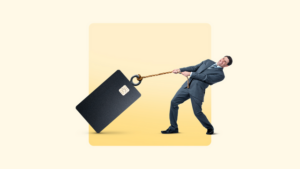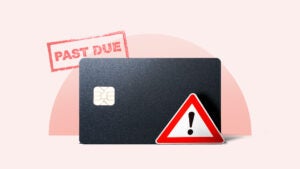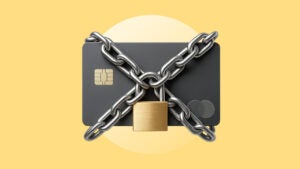My credit card issuer lowered my limit — what do I do?




Key takeaways
- Credit limit decreases can negatively affect credit scores, especially if there is an existing balance on the card.
- It is possible to try to persuade the credit card issuer to increase the limit again, but it is not guaranteed.
- In the event of a credit limit decrease, there are alternative options to make large transactions, such as seeking credit from other sources or reducing expenses.
- To avoid a credit limit decrease, it is important to maintain responsible credit usage and update income information with the credit issuer.
A credit limit decrease can be an unwelcome event, but they’re fairly common and not final.
Card issuers frequently change credit lines for a variety of reasons, which may or may not have anything to do with the way you handled the account. Lowering credit lines is simply a strategy to mitigate risk, and an issuer may take that action when necessary.
However, that doesn’t mean you are powerless against the decrease. If you’re not satisfied with the new limit, you may be able to persuade the issuer to hike it back up again. And if that doesn’t work, there are other options to make your desired transactions.
Why credit card issuers lower limits
As outlined in the Fair Credit Reporting Act, credit card issuers have the right to lower credit limits at will. Here are three of the most common reasons why credit card issuers lower card limits:
- Too many missed payments. This indicates a risk of credit card default.
- Too many minimum payments. This suggests the cardholder may not be able to afford additional debt or manage a higher credit limit.
- A lengthy period of credit card inactivity. This suggests the cardholder is no longer interested in the line of credit and may even prompt the issuer to close the account.
Another consideration is the economy. Issuers tend to extend larger lines when conditions are favorable and shorter ones when they’re not. Therefore, if the economy was in a robust position when you applied for the card, it may adjust the line downward when it’s not. Such was the case in 2020 when the COVID-19 pandemic struck and many cardholders had at least one of their credit card limits reduced.
Outside of problematic credit card activity and economic volatility, issuers may also adjust credit limits based on their own internal financial circumstances and capital reserves.
What lower limits mean for your credit scores
In the event that you carry a balance, a credit card limit decrease can result in a drop in your credit scores, even if you’ve been managing your cards responsibly.
The most commonly used consumer credit scores are produced by FICO and VantageScore, and each rank revolving debt as an important factor. The amount of the credit line you’ve already used up, both per credit card and on all of your cards, is calculated into your scores.
In general, a revolving balance below 30 percent of the limit is ideal. When a credit card issuer lowers the limit on a card that has a balance, though, the debt-to-credit limit ratio will be inflated and can have a serious negative effect on your credit scores.
For example, if your credit card has a $1,000 limit and you currently owe $250, your credit utilization ratio would be at a safe 25 percent. But if the issuer halves your limit, that same debt would comprise 50 percent of the credit line, potentially causing your scores to decline.
What to do if your credit limit is reduced without warning
An unexpected drop in your credit card limit has the potential to complicate your financial life. Here’s what you can do if your credit card issuer reduces your limit without warning you in advance:
1. Start using your account again
If your card’s limit was reduced due to account dormancy, pick it up and start using it, says Howard Dvorkin, a Florida-based CPA and chairman of Debt.com. “After you make a few charges, they may change their mind.”
This is often a good time to use your credit card to make automatic bill payments or to cover the cost of monthly subscription services. By putting small, regular payments on your credit card, you can prove that you are still interested in using the card while avoiding extra expenses that might negatively affect your budget.
2. Check your credit reports
To further inspire credit card issuers to up your limits, make sure your credit reports are clean of errors or fraud. Before asking for a credit limit raise, review your three consumer credit reports from AnnualCreditReport.com. If you see any inaccuracies that are bringing your scores down, dispute them.
You will also want your reports to list plenty of attractive and accurate data. “It’s possible that the issuer lowered your limit because you did make some mistakes,” says Dvorkin. In that case, get back on track. Use your cards monthly, pay on time and delete revolving debt. After at least six months, contact the issuer again. With that evidence on your reports, you may be eligible for a higher line.
3. Manage your credit utilization ratio
If you are using a large amount of your available credit, it might be a good idea to pay down some of your outstanding balances. Not only will this improve your credit score, but it can also prove that you are not at risk of maxing out your credit cards and defaulting on your debt.
Once your credit card issuer sees that you are capable of paying off your existing balances, they may be more likely to restore your former credit limit.
4. Contact your credit card issuer
If you believe you can afford a larger credit line, contact the credit card issuer and ask to speak to a representative who has the authority to make changes to your account.
People have a perception that banks know more about them than they really do. Communicate to them what your income is. What you’re making is an important part of their calculation. They only get that information when you first applied for the account. Maybe you’re making more, or your occupation is stable and it’s unlikely you’ll be laid off.— Matthew Goldman, founder of Totavi and former CEO of Vertical Finance
Just be honest, since the issuer may request documentation. If you’ve been a responsible and active cardholder, the issuer may increase the limit.
Still, success isn’t guaranteed. When John Egan, a financial writer from Austin, Texas, called one of his card issuers regarding a credit limit cut, the representative informed him that they were trying to find ways to reduce risk, thus sticking with the adjustment. “I was disappointed,” says Egan. “I’ve been very diligent about making my payments on time and having a low credit utilization ratio, all the things you’re supposed to do to keep your credit strong.”
In such a case, you may want to wait the decision out. “Don’t stop trying,” says Goldman. “Pay any debt down and never miss a payment. Then call and ask again.”
How to make large transactions with a smaller credit line
In the event that your current credit issuers refuse to budge on the limit, and you want or need to make some substantial transactions but don’t have the cash available, consider your options:
- Open a new credit card. There are plenty of great credit cards on the market, so apply for a new account. If you want to make large purchases, the right card will be essential, so choose carefully.
- Take out a loan. If you want to buy something and then pay it off in monthly installments, a loan may be the right choice. It may help your credit scores rise, too. It can add to the variety of credit products in use without impairing your debt-to-credit ratio since installment loans aren’t revolving credit products.
- Use layaway. Major retailers such as Burlington, Walmart and Sears offer layaway programs where you can reserve an item with a cash deposit and then pay the remaining balance off over time. When you’re all paid up, the item is yours. No credit check is required because it’s not a credit product, though small fees may apply.
- Pay incrementally. Shopping channels such as QVC and HSN and some major retailers like Macy’s offer payment arrangements (through services like Klarna) where the price is divided into a few equal payments. For example, if you would like to buy a $200 piece of jewelry, the company might break it up into four payments of $50. That might be well under your (newly lowered) credit line, so it won’t put your credit scores at risk.
- Consider alternative financing. With companies like CareCredit, you can cover out-of-pocket health expenses (for you and your pet) interest-free with short-term financing plans.
How to prevent a credit limit decrease
Although you have no control over an economic downturn or a credit issuer’s internal business decisions, you can take steps to offset the possibility of a credit issuer lowering your credit line for other reasons in the future:
- Become an active credit customer. “Regularly use the cards you have, even if it’s just a small purchase, so it’s not dormant,” says Egan. It will indicate to the issuer that you do need the credit line and that it shouldn’t go to somebody else.
- Treat all credit accounts responsibly. If you have a tendency to pay late, enroll in automatic bill pay to ensure timely payments. For credit cards, send the entire amount due whenever possible. If your balance does creep up, suspend charging and aggressively pay the debt down.
- Keep your credit card issuers updated. Making more money now than you used to? Get on the phone and notify your credit card issuer. Higher incomes often correlate with higher credit limits, especially if you have a history of on-time payments and positive credit behavior.
Most importantly, try to take a proactive approach towards your credit accounts. At least once a year, assess the active credit cards you have and use. Each account should have a credit limit that commiserates with your spending needs. Add more cards to your portfolio if you need more charging ability. This way, you’re less likely to come up short in the event of a credit line adjustment. And if a credit card issuer does lower your line, you’ll know what to do.
“Remember, it’s not a personal insult,” says Dvorkin. “It’s a business decision.” Convince them that you are a good credit risk, after all.
The bottom line
If your credit card issuer lowers your limit, it’s a good opportunity for you to take a look at the way you are using your credit accounts and see if you can improve any of your credit card habits. If you carry high balances and only make minimum payments, for example, you may want to see if it’s possible to put a little more money towards those monthly credit card bills.
That said, sometimes credit card issuers reduce card limits for reasons outside of your control, such as the state of the economy or the threat of a potential recession. Contact your credit card issuer if you believe that you can handle a higher credit limit, and don’t be afraid to remind them of your responsible credit use or a recent increase in your household income.
Why we ask for feedback Your feedback helps us improve our content and services. It takes less than a minute to complete.
Your responses are anonymous and will only be used for improving our website.





